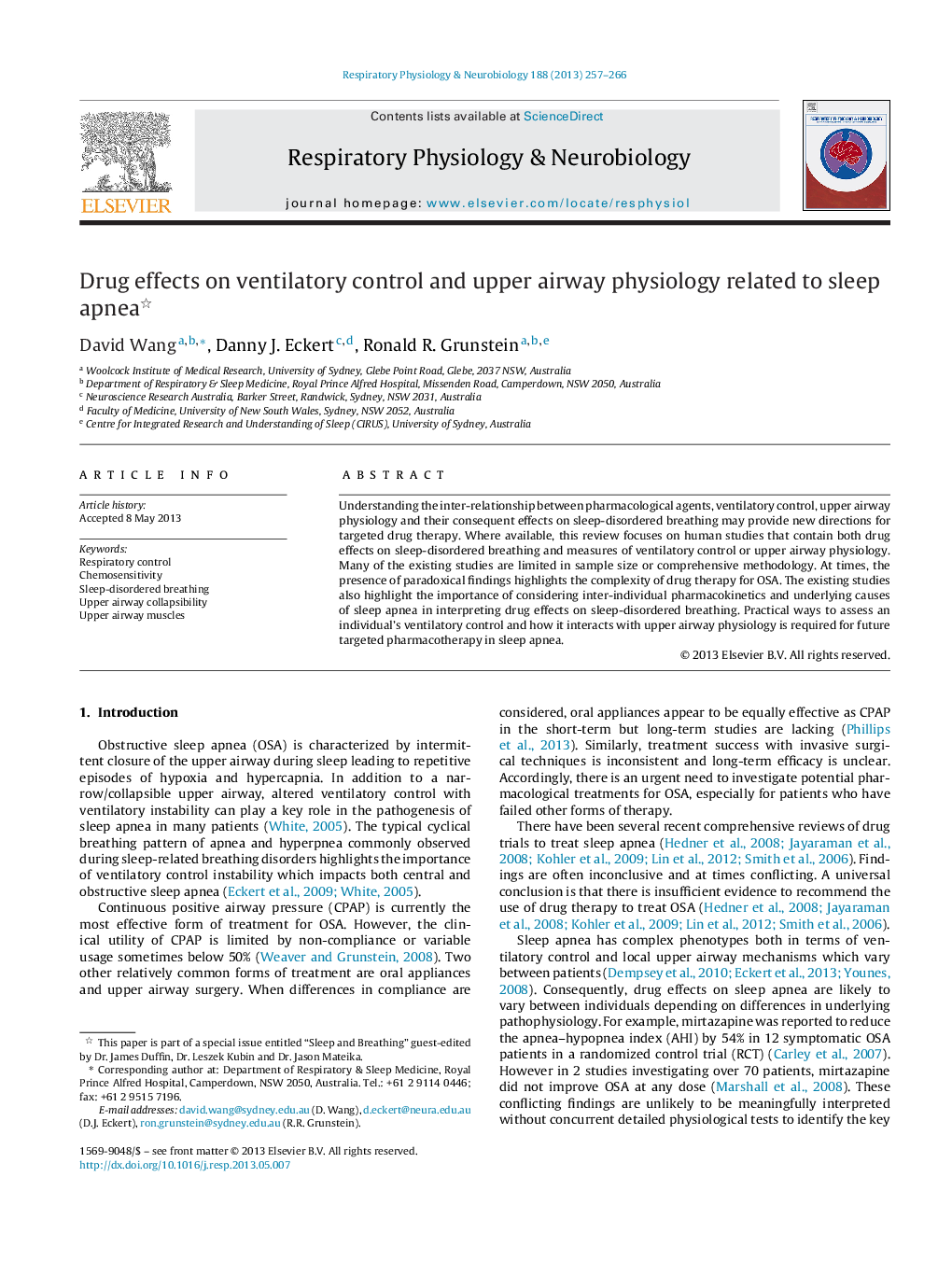| Article ID | Journal | Published Year | Pages | File Type |
|---|---|---|---|---|
| 2847137 | Respiratory Physiology & Neurobiology | 2013 | 10 Pages |
•Drugs, ventilatory chemosensitivities/loop gain and sleep apnea.•Drugs, CO2 reserve, CO2 ventilatory recruitment threshold and sleep apnea.•Drugs, cerebral blood flow and sleep-breathing instability.•Drugs, upper airway muscle tone, collapsibility and sleep apnea.
Understanding the inter-relationship between pharmacological agents, ventilatory control, upper airway physiology and their consequent effects on sleep-disordered breathing may provide new directions for targeted drug therapy. Where available, this review focuses on human studies that contain both drug effects on sleep-disordered breathing and measures of ventilatory control or upper airway physiology. Many of the existing studies are limited in sample size or comprehensive methodology. At times, the presence of paradoxical findings highlights the complexity of drug therapy for OSA. The existing studies also highlight the importance of considering inter-individual pharmacokinetics and underlying causes of sleep apnea in interpreting drug effects on sleep-disordered breathing. Practical ways to assess an individual's ventilatory control and how it interacts with upper airway physiology is required for future targeted pharmacotherapy in sleep apnea.
